The 4 Best Unidirectional Microphones
Knowing how to choose the best microphone for you implies knowing exactly what you need it for. Microphones, as we all know, vary in many of their characteristics, and it is a personal obligation to maximize those advantages for your own benefit. A live vocalist's microphone is not the same as the microphone used for PC activities. Bothe of them could be excellent microphones and can be unidirectional, each geared for different conditions. In this post we will detail the best unidirectional microphones, and for what we can use them.
Unidirectional microphones are those that pick up the sound from the front, obviating or minimizing the lateral sounds and the sounds that are behind the microphone. This feature has many application advantages, which we will see in the course of our article.
- Comparison Chart Of The 4 Best Unidirectional Microphones
- 1.- Shure SM7B Unidirectional Microphones
- Buying Guide For the Shure SM7B One-Way Microphone
- 2.- Bosch RE320 Unidirectional Microphones
- Buying Guide For he Bosch RE320 Unidirectional Microphone
- Where to Buy the Bosch RE320 Unidirectional Microphone?
- 3.- Neumann TLM 103 Unidirectional Microphone
- Buying Guide for the Neumann TLM 103 Unidirectional Microphone
- Where to Buy the Neumann TLM 103 Unidirectional Microphone?
- 4.- Blue Snowball Ice Unidirectional Microphones
- Buying Guide For the Blue Snowball Ice Unidirectional Microphone
- Where to Buy Blue the Snowball Ice Unidirectional Microphone?
- What Are Unidirectional Microphones?
- Why Buy Unidirectional Microphones?
- Important Points I Should Know Before Buying Unidirectional Microphones of Any Brand Or Model
- Which Unidirectional Microphone Should I Buy?
- Conclusion
- Comparative Chart Of The 4 Best Unidirectional Microphones
Comparison Chart Of The 4 Best Unidirectional Microphones
1.- Shure SM7B Unidirectional Microphones
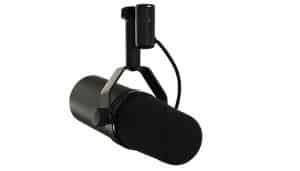
Shure's SM7B Dynamic Vocal Microphone is a high-level microphone. It is a dynamic, flat-frequency, wide-range microphone that has a clean, natural output for voice and music. It is equipped with midrange and bass attenuation controls to handle the smallest details. It also features better electromagnetic hum rejection to block broadband interference from equipment such as computer monitors.
The SM7B has a detachable windshield that is designed to reduce popping sounds and give a warmer tone for softer voices. For more precise microphone placement, it has a fork mount with a captive mounting nut for easy mounting and dismounting.
The microphone is built with a cardioid polar pattern that provides an even frequency and offers maximum rejection and minimal coloration of unwanted sounds. The frequency limits can be overridden to provide slight and high increases. For exceptional reliability, it has excellent cartridge protection and a rugged construction.
Buying Guide For the Shure SM7B One-Way Microphone
Without a doubt, Shure's SM7B is a fantastic microphone with a wide frequency response range, bass control, and mid-range controls. When configured correctly, it delivers crisp, clean, professional audio with the lowest noise.
Price-quality ratio
This is one of the best microphones on the market. It’s widely used in different environments where external noise needs to be eliminated. The price is somewhat modest but it is a very good investment.
Highlighting Features
Its great sound and durability make this microphone stand out. It’s ideal for voice recordings.
Technical specifications
Where to Buy the Shure SM7B Unidirectional Microphones?
We got the Shure SM7B Unidirectional Microphones from Amazon.
- UN MICRÓFONO PARA TODO - grabación en estudio y en casa, producción de podcasts y streaming. El SM7B es el micrófono en el que confían los mejores vocalistas, productores de podcasts y streamers del mundo
- GRABACIÓN DE VOZ EN ESTUDIO - la cápsula dinámica del micrófono SM7B posee una respuesta de frecuencias suave, plana y de rango amplio que capta de forma natural y limpia tanto la música como la voz
- PODCAST Y RETRANSMISIÓN - el SM7B está presente en los mejores estudios de podcasts del mundo. El sistema de aislamiento antigolpes por suspensión de aire y el filtro antipop eliminan los ruidos mecánicos y de respiración. La voz se graba sin problemas y todo lo que sobra ni siquiera llega a la mezcla
- STREAMING - el éxito en el streaming empieza con un micrófono que capta el sonido de la música y las voces con una claridad y naturalidad excepcionales. El SM7B lleva décadas a la vanguardia ofreciendo todas estas prestaciones
- CONEXIÓN XLR PROFESIONAL: usando la conexión XLR con una interfaz de audio tienes un mayor control sobre el sonido y, con ello, una mayor calidad en general. Se recomienda un mínimo de 60 dB de ganancia para conseguir ese icónico tono cálido y equilibrado que se suele asociar al SM7B.
2.- Bosch RE320 Unidirectional Microphones
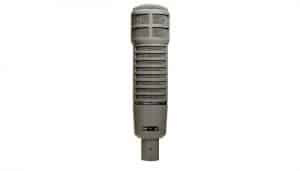
If there is always a hustle and bustle in your neighborhood, this microphone is for you. The Bosch RE320 is a good quality microphone that can produce clear sounds. It has several filters inside, against explosions and wind and has internal pop filters. The microphone connects to the PC via the XLR cable. Yes, it is quality over comfort. The frequency response is 45Hz - 18kHZ, which is more than enough to capture even the smallest details of your pronunciation.
There is additional equipment that you will need to purchase in order to use the microphone, such as a stand, shock mount, and more. You can find all of these things on Amazon too.
Buying Guide For he Bosch RE320 Unidirectional Microphone
This microphone is of very good quality and it meets all your expectations. That is why it has earned a place among our recommended. It’s Ideal for percussion instruments and deep vocals.
Price-quality ratio
It has a great value for the price and it’s a high-value microphone at a relatively affordable price.
Highlighting Features
Its ability to eliminate external noise is enviable.
Technical specifications
Where to Buy the Bosch RE320 Unidirectional Microphone?
We got the Bosch RE320 One-Way Microphone from Amazon.
3.- Neumann TLM 103 Unidirectional Microphone
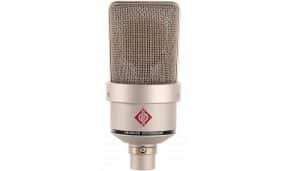
Neumann is a leading manufacturer of fine studio and stage microphones. The Neumann TLM 103 microphone is made with a large diaphragm, making it one of the best high quality microphones for almost all advanced and semi-advanced applications. It features a circuit with no transformer to achieve a low noise level (as low as 7 dB-A) and the highest level of sound pressure. It provides clean, direct sound with powerful bass transmission down to the lowest frequencies, and its pattern is unidirectional - cardioid, providing a highly balanced sound and excellent attenuation of external noise.
This microphone is setting new standards; it is equipped with a very large presence boost, ranging from 6 to 15 kilohertz, which helps vocals cut through the mix. The package includes a microphone, a shock absorber and a briefcase for safe store. The Neumann TLM 103 SET is exactly what you need in a professional microphone at a high price.
Buying Guide for the Neumann TLM 103 Unidirectional Microphone
This microphone is great if your budget allows it and it’s Ideal for studio recordings.
Price-quality ratio
Product quality: Excellent but with a higher price. When investments of this magnitude are made, the product must be of great value, and this microphone will be surely a great investment.
Highlighting Features
Its clean, clear, high-quality sound is unbeatable.
Technical specifications
Where to Buy the Neumann TLM 103 Unidirectional Microphone?
We got the Neumann TLM 103 Unidirectional Microphones from Amazon.
- Micrófono cardioide de gran diafragma
- Transductor de gradiente de presión con con one-diaphragm Capsule
- Sin transformador circuitos
- Extremadamente bajo nivel de ruido: 7 dB-A
- Incluye soporte giratorio
4.- Blue Snowball Ice Unidirectional Microphones
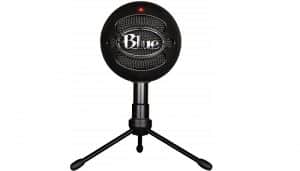
If you're a little short on money these days, don’t worry, you can still buy a decent quality microphone. The Blue Snowball Ice microphone, for example, doesn't cost much. However, it does provide high-quality recordings and pristine sounds.
The input of this microphone is USB. This microphone is protected by a pop protector and has a cardioid condenser capsule which is probably the best choice for voice recordings.
Essentially, it is another great option that will not only increase the quality of your voiceovers, but will also contribute to improving online conversations and other similar activities.
Buying Guide For the Blue Snowball Ice Unidirectional Microphone
This microphone is intended for PC use. However, its quality characteristics and the fact that it is unidirectional - cardioid makes it one of our best microphones.
Price-quality ratio
The ratio between quality and price is excellent. It is a very good quality microphone at a very affordable price.
Highlighting Features
Its easy connection and its quality for voiceovers make it stand out.
Technical specifications
Where to Buy Blue the Snowball Ice Unidirectional Microphone?
We got the Blue Snowball Ice One-Way Microphone from Amazon.
- Cápsula de condensador personalizada: gracias a la cápsula de condensador personalizada de Blue, el micrófono Snowball iCE ofrece un audio cristalino que dista mucho de tu micro del ordenador
- Patrón de captación cardioide: captura tu voz con un sonido claro y enfocado para streaming, podcasting, broadcasting, llamadas de Skype y reuniones de Zoom
- Elegante diseño retro: graba o transmite con estilo gracias al diseño clásico del equipo de grabación que queda muy bien en el escritorio y frente a la cámara
- Tripié ajustable de escritorio: permite colocar el micro de condensador en relación con la fuente de sonido, lo que mejora la calidad del sonido y ahorra espacio en el escritorio para la emisión
- Certificado para Skype y Discord: ya sea para entrevistas por Skype, partidas en directo en Twitch o comunicarte en todo el mundo. Se te escuchará alto y claro en las principales plataformas de VOIP
What Are Unidirectional Microphones?
Unidirectional microphones can receive sound from one specific direction, usually from the front, and mute or attenuate all other sounds from other directions. The side of the microphone from where it picks up the sound is usually called the voice side. They differ from omnidirectional microphones in that the lasts pick up sounds from all sides.
If we review the polar image of a unidirectional microphone, we can see that the maximum sound gain is on its front side. And as we move the source sideways, the gain decreases, even reaching near zero values at the back. This graph is very much like a heart, hence the name cardioid.
With these graphics we can identify how much gain a microphone shows, and where it is directed. These microphones are widely used when the sound source is directly in front of it, and we don't need all the other sounds. A vocalist at a concert, a classroom conference, or a podcast recording are good examples of where you could use a one-way microphone so that the other sounds around you are not on the recording.
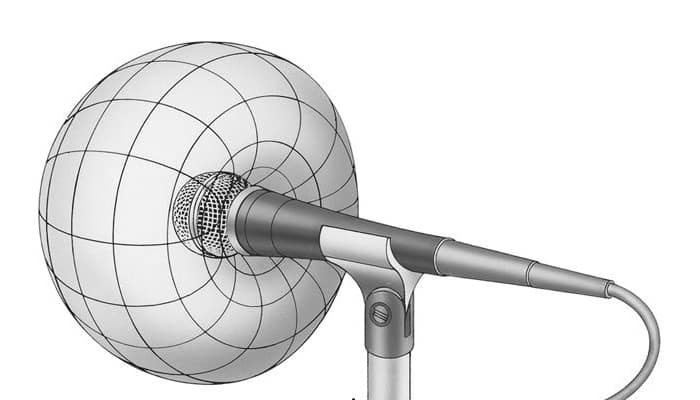
How a Unidirectional Microphone Works
As if by magic, unidirectional microphones can pick up what they're going for, but reject sounds on the sides and back.
For example, speak into a one-way microphone from all sides while listening to their output. Your reproduced voice will be louder when you speak on the front of the microphone and softer when you speak on the rear.
Because they discriminate sounds on the sides and rear, one-way designs help reject unwanted sounds, such as room acoustics (reverberation), feedback, or leaks. For this reason, they are the most popular microphone option.
Why Buy Unidirectional Microphones?
Unidirectional microphones pick up the sound using different patterns of polar response. Important considerations when choosing a microphone's polar response pattern include the following:
- Unidirectional microphones are less sensitive to off-axis sound than omnidirectional ones therefore they capture less ambient sound.
- These microphones are best used when cleaner, less reverberant sound is needed.
- Unidirectional microphones can be used at a greater distance than omnidirectional types and still achieve a high level of direct sound.
- It is important to appreciate that direct sound weakens as it moves away from the sound source at a rate controlled by the inverse square law.
- It's also important to note that unidirectional microphones are subject to increased bass response the closer they are to a sound source. This phenomenon is known as the proximity effect.
- Unidirectional microphones are less prone to feedback than omnidirectional types. Feedback is the unwanted leakage of audio from the speakers into a microphone, causing a loud screech or howl.
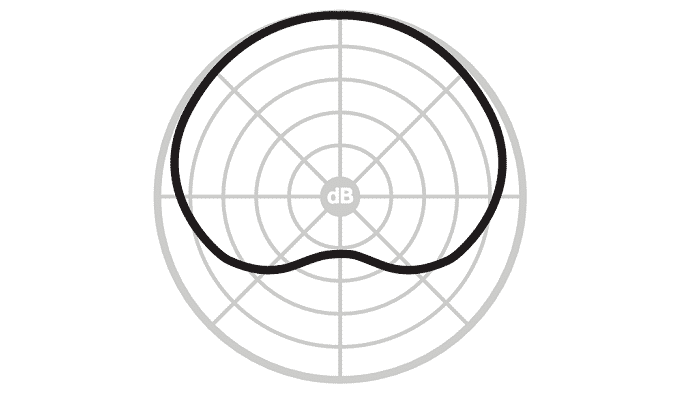
Important Points I Should Know Before Buying Unidirectional Microphones of Any Brand Or Model
There are many different types of microphones commonly used. The differences are generally described in two ways: the technology they use (dynamics, capacitor, etc.) and their directionality (omnidirectional, unidirectional, etc.). In addition to that, microphones have a number of other characteristics that must be considered.
When choosing a microphone, the first thing you should know is what features do you need. After that, you can worry about things like size, brand, cost, etc.
Directionality
Decide which type of directional pattern best suits your needs. Remember that it is generally better to use a less directional microphone in a position close to the sound source, than to be further away using a hypercardioid.
Frequency response
Make sure that the frequency response of the microphone is adequate for its intended use. As a general rule, flat response patterns are best, but in many cases a custom response will be even better.
Impedance
The golden rule is: low impedance is better than high impedance.
Noise Management
Remember that the diaphragm works by converting the vibrations of the sound waves into an electrical signal. And it is clear that, unless the microphone has some kind of protection system, the diaphragm cannot distinguish the difference between a desirable sound wave vibration and any other type of vibration, such as a person touching the microphone. Any type of vibration will become part of the generated audio signal.
If your microphone is likely to be subject to some type of driving noise or vibration, you will need a microphone that will help prevent this noise from being picked up. That is why high-quality handheld microphones generally attempt to isolate the diaphragm from vibrations by foam padding, suspension, or some other method. Poor-quality microphones tend to transfer vibrations from the housing directly to the diaphragm, resulting in terrible noise.
Please note that lavalier microphones do not usually have protection against noise handling, simply because they are too small to incorporate any padding. Therefore, it is important to ensure that they do not move or hit with anything while recording.
Which Unidirectional Microphone Should I Buy?
If you can afford it, it makes sense to buy a range of microphones and use the right one for each job. And if your budget is more limited, think of all the different things you need to use the microphone for and try to find something that will do reasonable work for as many of them as possible.
For vocalists, the Shure SM7B is a good starting point.
If you want to create videos, a useful option is the Blue Snowball Ice.
For studio recording, specifically voice, the Neumann TLM 103 is the highest performing one.
In percussion and bass sound recording the Bosch RE320 is the best.
Conclusion
In the end, sound is quite subjective; you really want a microphone that provides the sound you like. A good idea is to set up a controlled test, so record the same sounds using different microphones, keeping all other factors constant.
Make sure you are comparing apples to apples. For example, don't compare a handheld cardioid and a shotgun cardioid in the same position, if you want to compare these microphones, make sure each one is placed in its optimal position.
We hope we have helped you choose the best unidirectional microphone and remember that at the end of the day, your purchase should be geared to your needs, and of course to your pocket. The four microphones recommended here are of very good quality. Good luck and good purchase.
Comparative Chart Of The 4 Best Unidirectional Microphones
Última actualización el 2024-07-27 / Enlaces de afiliados / Imágenes de la API para Afiliados
Si quieres conocer otros artículos parecidos a The 4 Best Unidirectional Microphones puedes visitar la categoría Types.
Leave a Reply





¡Más Contenido!